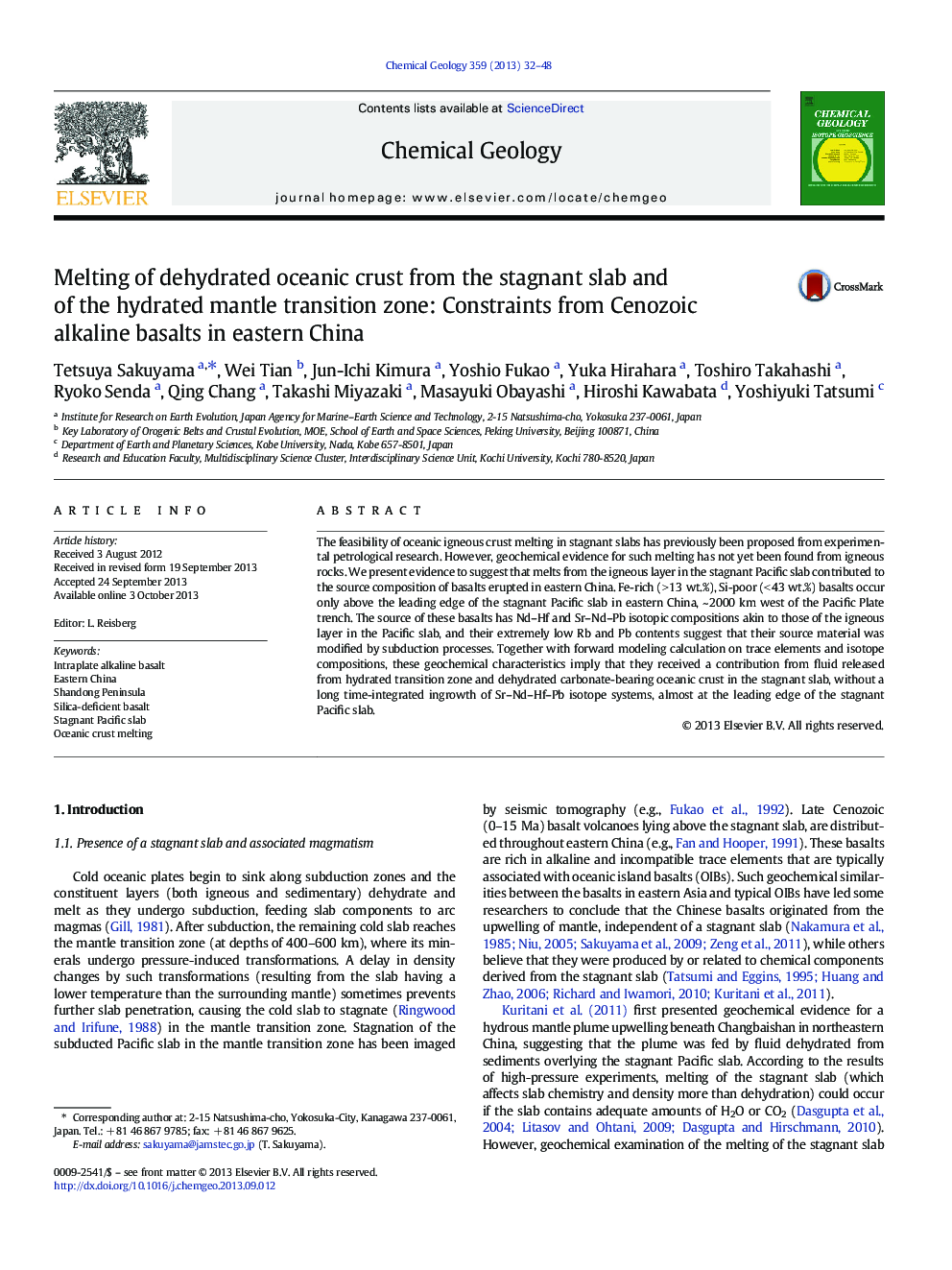| Article ID | Journal | Published Year | Pages | File Type |
|---|---|---|---|---|
| 4698914 | Chemical Geology | 2013 | 17 Pages |
•Highly Fe-rich basalts are observed above leading edge of the stagnant Pacific slab.•Dehydrated igneous oceanic crust can reproduce high Ce/Pb of the basalts.•Sr–Nd–Pb isotope compositions of the basalts are within DM range.•The basalts have an Nd–Hf isotopic affinity to Pacific DM domain.•These suggest melting of dehydrated oceanic crust in the stagnant Pacific slab.
The feasibility of oceanic igneous crust melting in stagnant slabs has previously been proposed from experimental petrological research. However, geochemical evidence for such melting has not yet been found from igneous rocks. We present evidence to suggest that melts from the igneous layer in the stagnant Pacific slab contributed to the source composition of basalts erupted in eastern China. Fe-rich (> 13 wt.%), Si-poor (< 43 wt.%) basalts occur only above the leading edge of the stagnant Pacific slab in eastern China, ~ 2000 km west of the Pacific Plate trench. The source of these basalts has Nd–Hf and Sr–Nd–Pb isotopic compositions akin to those of the igneous layer in the Pacific slab, and their extremely low Rb and Pb contents suggest that their source material was modified by subduction processes. Together with forward modeling calculation on trace elements and isotope compositions, these geochemical characteristics imply that they received a contribution from fluid released from hydrated transition zone and dehydrated carbonate-bearing oceanic crust in the stagnant slab, without a long time-integrated ingrowth of Sr–Nd–Hf–Pb isotope systems, almost at the leading edge of the stagnant Pacific slab.
Graphical abstractFigure optionsDownload full-size imageDownload as PowerPoint slide
